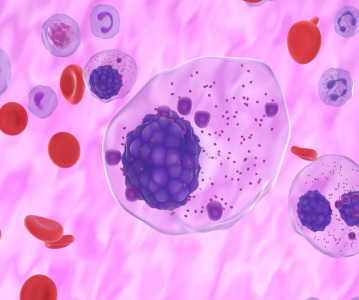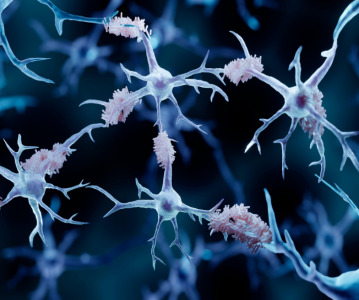Positive interim data from Phase II PoC study of evinacumab in patients with HoFH

Interim data from the first four patients treated in this study showed that evinacumab added to current lipid-lowering therapy reduced low-density lipoprotein cholesterol levels by an additional 55% at week 4 compared to baseline.
Regeneron Pharmaceuticals has announced that positive preliminary results from an ongoing proof-of-concept study of evinacumab (REGN1500) in patients with Homozygous Familial Hypercholestrolemia (HoFH) were presented at the 84th European Atherosclerosis Society (EAS) Congress in Innsbruck, Austria. The interim data from the first four patients treated in this study showed that evinacumab added to current lipid-lowering therapy reduced low-density lipoprotein cholesterol (LDL-C) levels by an additional 55% (mean reduction; range 25 to 90%) at week 4 compared to baseline. Evinacumab is an investigational monoclonal antibody to angiopoietin-like protein 3 (ANGPTL3). ANGPTL3 acts as an inhibitor of lipoprotein lipase and endothelial lipase, and appears to play a central role in lipoprotein metabolism.
HoFH is the most severe form of hypercholesterolemia. While rare, occurring in approximately 1 to 2 people per million, untreated patients can have "bad cholesterol" or LDL-C levels ranging from 500 to 1000 mg/dL, compared to normal LDL-C levels of less than 130 mg/dL. Due to these high levels of LDL-C, patients with HoFH are at an extreme risk of premature cardiovascular disease. Without treatment, patients typically present with signs and symptoms of atherosclerotic cardiovascular disease before the age of 20.
"HoFH patients are not as responsive to traditional lipid lowering therapies like statins, and use of some new treatment options can be limited by safety and tolerability concerns," said Bill Sasiela, Vice President, Program Direction, Regeneron. "Preliminary data from this ongoing study show that evinacumab reduced LDL-C when combined with other lipid-lowering therapies, and suggests that ANGPTL3 is a new and exciting target that we look forward to exploring further in additional clinical trials."
The ongoing single-arm, open label, proof-of-concept study is targeting to enroll up to eight patients with HoFH. Study patients' diagnosis is confirmed both genetically and phenotypically. Current lipid-lowering therapy was maintained from 4 weeks before baseline through the 26-week treatment and observation period. Patients on LDL apheresis within 4 weeks prior to screening were excluded. For the 4 patients reported here, all were receiving maximum doses of statin plus ezetimibe with one patient additionally receiving lomitapide 20 mg. Evinacumab was dosed as a single 250 mg subcutaneous injection at baseline and subsequently, at week 2, as a 15 mg/kg intravenous (IV) infusion. The primary endpoint of the study was the mean percent change in LDL-C levels from baseline to week 4.
After 4 weeks of treatment and 2 weeks after administration of the 15 mg/kg IV dose, the mean reduction in LDL-C in the 4 patients was 55% (primary endpoint of the study). Among these 4 patients, the percent reductions in LDL-C ranged from 25 to 90%. Overall, the patients enrolled in the study saw their mean LDL-C levels fall from 331 mg/dL at baseline to 175 mg/dL at week 4.
Evinacumab was generally well tolerated and there were no adverse events leading to discontinuation. The most common drug-related adverse events were injection-site reactions, which were mild in severity.
Related News
-
News BioNTech to begin mRNA vaccine manufacturing in Rwanda by 2025
German biotechnology company BioNTech has stated their intentions to begin production at their mRNA vaccine factory in Rwanda by 2025, which will mark the first foreign mRNA vaccine manufacturing site on the continent of Africa. -
News Identifying Alzheimer’s Disease biomarker proteins with whole blood tests
A University of Manchester spin-out pharmaceutical company, PharmaKure, has reported successful study results for the quantification of Alzheimer’s Disease biomarker proteins with a whole blood test. -
News Bill & Melinda Gates Foundation to boost mRNA vaccine initiatives in Africa with USD $40m
To address vaccine inequality and accessibility issues, the Bill & Melinda Gates Foundation aims to deliver USD $40m to various biotech companies and vaccine manufacturers in support of mRNA vaccine development. -
News CPHI Podcast Series: Exploring neurological frontiers in Alzheimer's and beyond
The next episode of the CPHI Podcast Series delves into the science and background behind some recent developments in the field of Alzheimer's disease and neurological disorders. -
News Is patient centricity the future of pharmaceutical manufacturing?
In this interview with Sandra Sánchez y Oldenhage, President of PharmAdvice, she speaks to the importance of considering patients in the manufacturing stages of the pharmaceutical supply chain, and how it can redefine healthcare. -
News CPHI Podcast Series: How to leverage AI for Drug Discovery
Artificial intelligence is the topic of debate in the latest episode from the CPHI Podcast Series, where Digital Editor Lucy Chard speaks with Bill Whitford of DPS Group about the integration of AI in healthcare. -
News Pfizer forges ahead with blood cancer therapy after approval from FDA
Pfizer gains accelerated approval from the US FDA for their new bispecific antibody therapy for multiple myeloma, set to address an unmet need for patients. -
News Alzheimer's drug donanemab deemed effective in landmark clinical trial
Results from the TRAILBLAZER-ALZ 2 Randomised Clinical Trial into the use of donanemab to treat early symptoms of Alzheimer’s disease have been analysed.
Position your company at the heart of the global Pharma industry with a CPHI Online membership
-
Your products and solutions visible to thousands of visitors within the largest Pharma marketplace
-
Generate high-quality, engaged leads for your business, all year round
-
Promote your business as the industry’s thought-leader by hosting your reports, brochures and videos within your profile
-
Your company’s profile boosted at all participating CPHI events
-
An easy-to-use platform with a detailed dashboard showing your leads and performance







